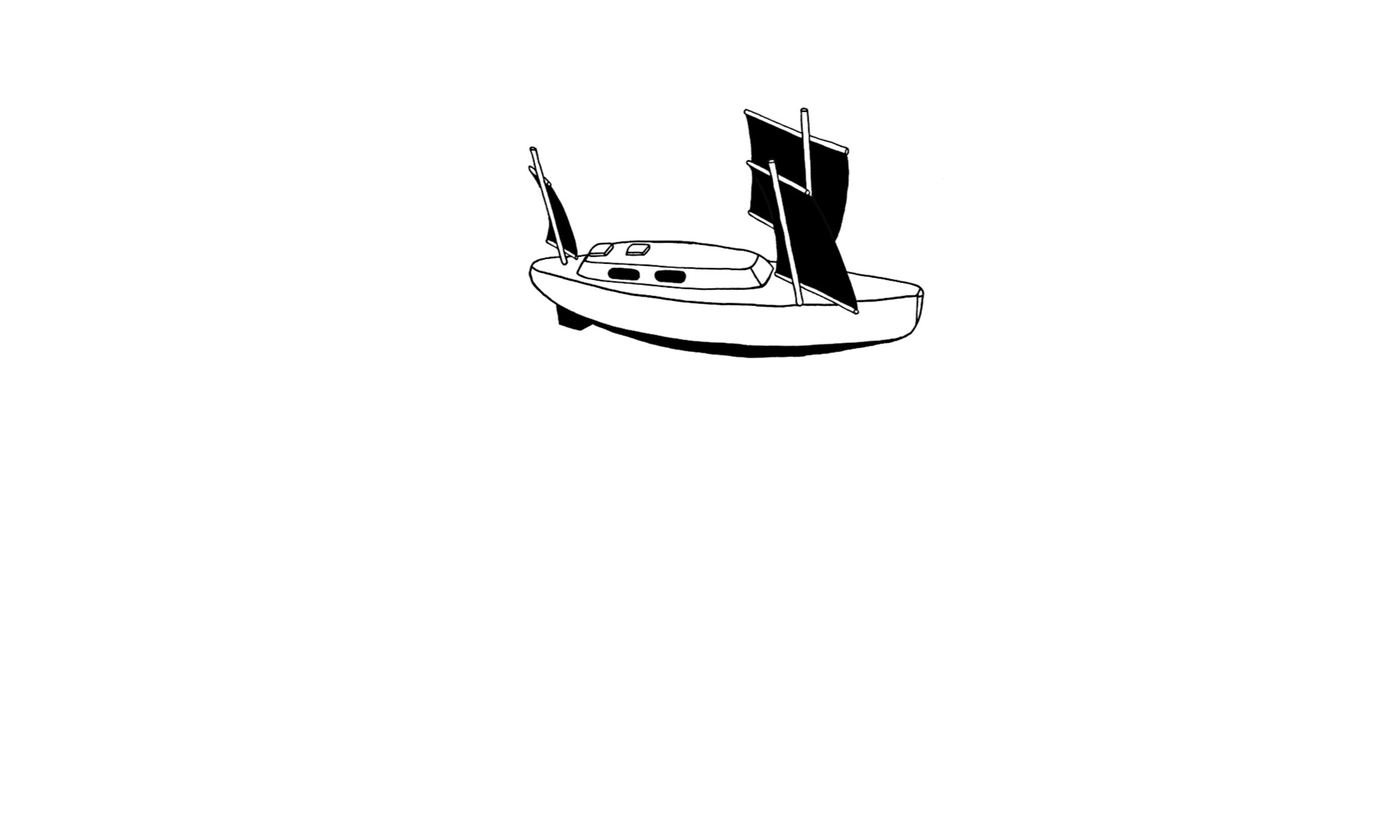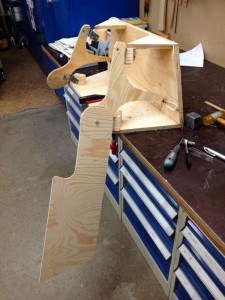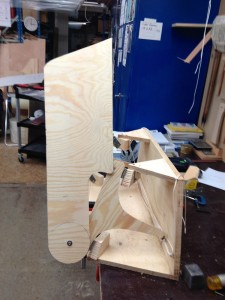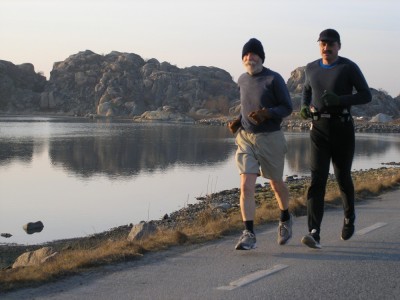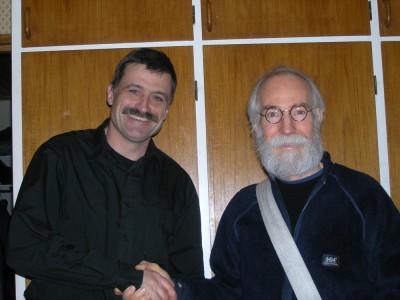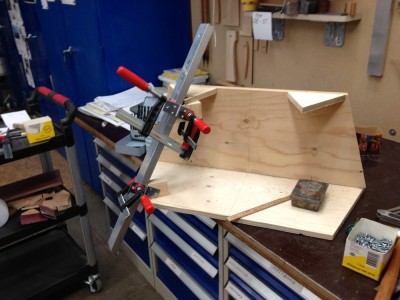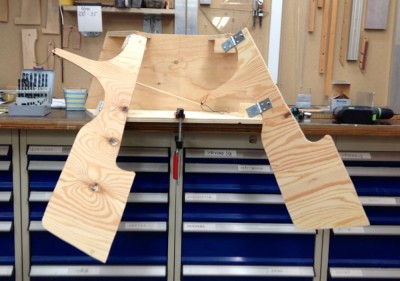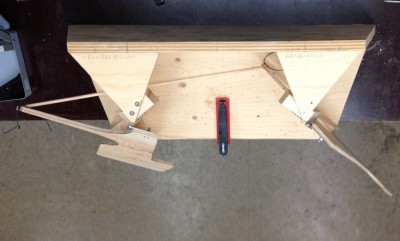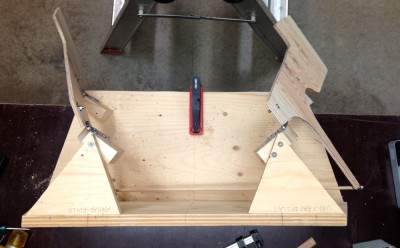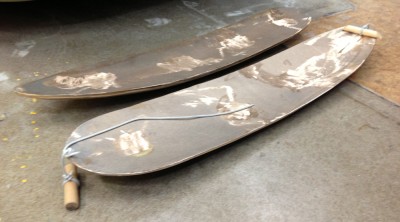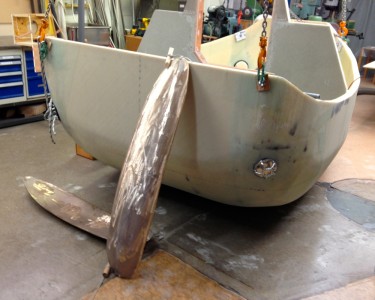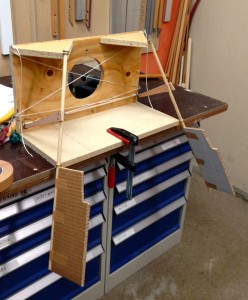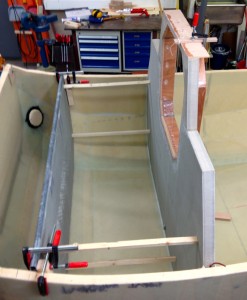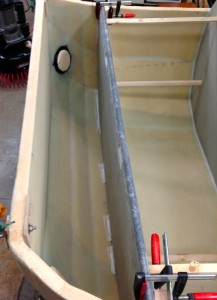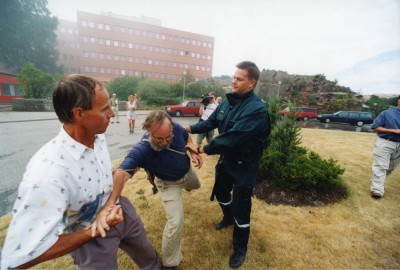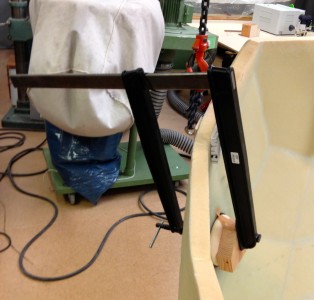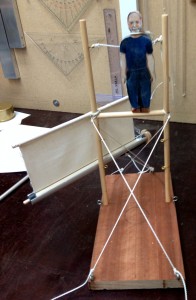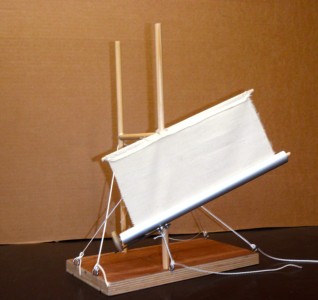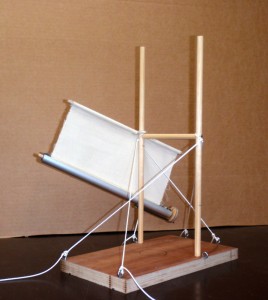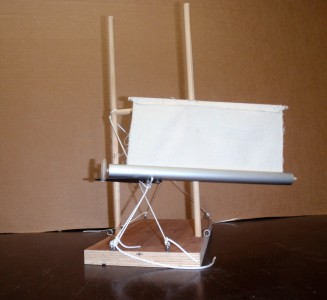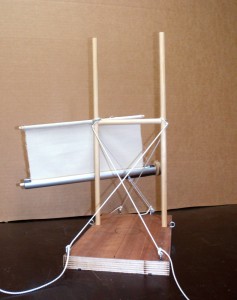Although a deep-water sailor i prefer kick-up rudders. Flotsam and jetsam may damage a fixed rudder. Attaching the rudder-blade to the rudder-head should be given some thought. Traditionally it is sandwiched in a slot much like the blade of a folding knife. There are some disadvantages to this method. The blade cannot be lifted more than 90 degrees. That is good enough to sail in shallow water but in port it sticks out and is easily damaged by other craft. Then there is the question of play. If given to much play the steering becomes imprecise going downwind. If given to little the rudder jams in its slot. The most difficult material to use is wood because it swells and shrinks.
A more modern way pioneered by Bolger and others is to clamp the pieces together using one bolt. At first it looks week but an analyze shows that it is strong. It is not equally strong on each tack but nearly so and strong enough. It is a simpler and lighter method and by adjusting the nut on the bolt you get just the right kind of play and friction. Also the rudder can be raised 180 degrees, an advantage in port. That is the method I use today.
The rudder mock-up now has kick-up rudder. the below picture show one rudder-blade attached in down position. Thanks to the platform I do not need ropes to raise the rudder-blade. It can be done by hand.
The picture below shows the rudder in up-position. Click once or twice to enlarge.
The picture below shows the same thing from the other side.
On wendsday I go to Gävle to give a talk to SXK -eggesundskretsen. I do hope the do not have a blizzard. Thursday I will be in Örebro to give a talk to Sweboat. Friday I be i Trollhättan to my dentist. There i will also visit my freind the ultra-distans runner Rune Larsson who gives me inspiration for endurance undertakings. Rune has won the Spartathlon three times. He has run across the US. He has rowed the Atlantic. He run 262.4 kilometer in 24 hours.
Rune and me running
Thanking Rune
To be continued…
Regards Yrvind.
